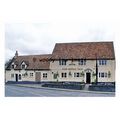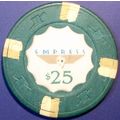Lettercard - Cairngorms. skiing, Ptarmigan restaurant - colourmaster c.1970s
- Condition : Used
- Dispatch : 2 Days
- Brand : None
- ID# : 93649175
- Quantity : 1 item
- Views : 544
- Location : United Kingdom

- Seller : justthebook (+1703)
- Barcode : None
- Start : Sat 23 Feb 2013 15:58:35 (EDT)
- Close : Run Until Sold
- Remain : Run Until Sold
Checks/Cheques
 for 1 item(s) edit
for 1 item(s) edit
Shipping Calculator
More Listings from This Seller view all
Seller's Description
- Postcard
- Picture / Image: The Cairngorms - includes tourist guide and map - pictures: skiing in the Cairngorms / Ptarmigan Observation Restaurant / White Lady Shieling / Fiacail Ski-Tow /
- Publisher: Colourmaster International
- Postally used: no
- Stamp: n/a
- Postmark(s): n/a
- Sent to: n/a
- Notes / condition:
Please ask if you need any other information and I will do the best I can to answer.
------------------------------------------------
Postage & Packing:
UK (incl. IOM, CI & BFPO): 99p
Europe: £1.60
Rest of world (inc. USA etc): £2.75
No additional charges for more than one postcard. You can buy as many postcards from me as you like and you will just pay the fee above once. (If buying postcards with other things such as books, please contact or wait for invoice before paying).
Payment Methods:
UK - PayPal, Cheque (from UK bank) or postal order
Outside UK: PayPal ONLY (unless otherwise stated) please. NO non-UK currency checks or money orders (sorry).
NOTE: All postcards are sent in brand new stiffened envelopes which I have bought for the task. These are specially made to protect postcards and you may be able to re-use them. In addition there are other costs to sending so the above charge is not just for the stamp!
I will give a full refund if you are not fully satisfied with the postcard.
----------------------------------------------
Text from the free encyclopedia WIKIPEDIA may appear below to give a little background information (internal links may not work) :
*************
The Cairngorms are a mountain range in the eastern Highlands of Scotland closely associated with the mountain of the same name—Cairn Gorm.
Usually referred to as The Cairngorms—this 'modern' use of Cairn Gorm to represent the whole range is potentially misleading—Watson (1975) refers to it as a nickname explaining that the range's former name is Am Monadh Ruadh—the red hills distinguishing them from Am Monadh Liath—the grey hills to the west of the River Spey.
If you look from Aviemore on a clear evening, the granite screes of Lairig Ghru and Braeriach do glow a warm red in the sun. The name Am Monadh Ruadh still lives among the oldest folk of Strath Spey, but long ago, outsiders had replaced it with 'the Cairngorms', on maps and in guide books—Watson (1975)
Ironically—naming the range after Cairn Gorm creates a contradiction since Cairn Gorm means Blue Cairn—taking that literally would make the red hills the blue hills changing the old name entirely. This irony appears to have been missed by many for both names were used in the naming of the National Park that incorporates the range. Its official English name, Cairngorms National Park, translates into Gaelic as the Blue Hills National Park, with its Gaelic strap-line, Pairc Naiseanta a Mhonaidh Ruaidh, translating into English as the Red Hills National Park.
In Alexander (1928) the author refers to Colonel T. Thornton visiting the area about 1786, and his book Sporting Tour published in 1804 in which he refers to the range as the Cairngorms—continuing:
The use of the term ""Cairngorms"" as applied to the group must have become well established early in the nineteenth century, for we find it in Col Thornton's Sporting Tour (1804), where there is a reference to ""Aurora peeping over the immense Cairngorms""—Alexander (1928) (p21)
Both Alexander (1928) and Watson (1975) appear to suggest that Colonel Thornton's book was the first time the term Cairngorms was used in print to refer to whole group.
The controversy over the name of the Cairngorms is representative of other controversies surrounding these mountains, which have the capacity to produce strong reactions in people who regard the mountains with affection.
Although The Cairngorms are within the Cairngorms National Park, they are only a part of it. Watson (1975) delineates the main Cairngorm massif as being between Aviemore in the north-west, Glen Gairn, Braemar in the south-east, and Glen Feshie in the south-west.
The approximate southern-boundary of the range runs from slightly east of Braemar, west along Glen Dee to White Bridge, through Glen Geldie to the head of Glen Feshie. The western-boundary runs down Glen Feshie (northward) and the River Spey to Aviemore. The northern-boundary runs roughly eastward from Aviemore through Glen More to Glen Avon. The eastern-boundary then runs (southward) up Glen Avon, and over Am Bealach Dearg to slightly east of Braemar.
To the south of the Cairngorms are a separate distinct range, The Grampians. Watson (1975) describes them as running from Drumochter in the west almost to the sea just south of Aberdeen, continuing:
Some map-makers have confused the issue by printing 'Grampians' over the Cairngorms and Strath Don hills as well! As it has often been used on maps to take in the Ben Alder and Perthshire hills far to the west of our area, it is unsuitable for this book.—Watson (1975)
Gordon (1925) draws the area of the Cairngorms even more tightly: the end-papers show a map where Aviemore, River Feshie, River Dee and Creag Choinnich just make it onto the map, and Glen Geldie, and Glen Gairn do not.
Before the Regionalisation of Scotland in 1975, most of the Cairngorms were within the county of Aberdeenshire, with the rest reaching into Inverness-shire in the west, and Banffshire in the north.
The Cairngorms consist of a large elevated plateau adorned with low, rounded glacial mountains.
Although not strictly a single plateau, the Cairngorms give the sense of being a single plateau, because the passes that cut through them are not very deep. Adam Watson gives the summit of Lairig Ghru as 835 metres, and the summit of Lairig an Laoigh at 740 metres, and The Sneck at 970 metres. Topographically, this means a walker could cross between the Cairntoul (1293m) – Braeriach (1296m) massif to the Ben Macdui (1309m) – Cairn Gorm (1245m) massif and onto the Beinn a' Bhùird (1196m) – Ben Avon (1171m) massif without descending below the 740m summit of the Lairig an Laoigh.
The Cairngorms became part of Scotland's second national park (see Cairngorms National Park) on 1 September 2003. The national park is in the Scottish council areas of Aberdeenshire, Moray, Angus, Perth and Kinross and Highland.
type=lettercard
theme=topographical: british
sub-theme=scotland
county/ country=aberdeenshire
number of items=single
period=1945 - present
postage condition=unposted
Listing Information
| Listing Type | Gallery Listing |
| Listing ID# | 93649175 |
| Start Time | Sat 23 Feb 2013 15:58:35 (EDT) |
| Close Time | Run Until Sold |
| Starting Bid | Fixed Price (no bidding) |
| Item Condition | Used |
| Bids | 0 |
| Views | 544 |
| Dispatch Time | 2 Days |
| Quantity | 1 |
| Location | United Kingdom |
| Auto Extend | No |




















